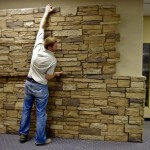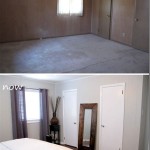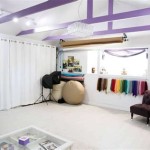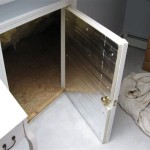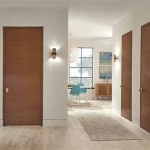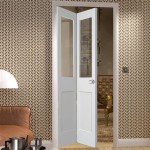Which Wood Is Best For Interior Design?
Selecting the appropriate wood for interior design projects is a crucial decision that impacts both the aesthetics and functionality of a space. The choice depends on factors such as the intended application, desired aesthetic, budget constraints, and durability requirements. Understanding the properties of various wood species and their suitability for different interior applications allows informed decisions leading to visually appealing and structurally sound results.
Wood is broadly categorized into two main types: hardwood and softwood. While the terms might suggest varying densities, they actually refer to the reproductive method of the tree. Hardwoods come from deciduous trees (trees that lose their leaves annually), while softwoods come from coniferous trees (trees that usually stay green year-round). Each category possesses distinct characteristics that make them suitable for specific interior design applications.
Hardwoods are generally denser and more durable than softwoods. This makes them ideal for applications subjected to wear and tear, such as flooring, furniture, and cabinetry. The tight grain patterns in hardwoods also contribute to their aesthetic appeal, adding character and warmth to interior spaces. However, hardwoods tend to be more expensive and can be more difficult to work with compared to softwoods.
Softwoods are typically less expensive and easier to work with than hardwoods. They are often used for framing, molding, and trim work. While not as durable as hardwoods, certain softwood species possess sufficient strength and resistance to decay for specific interior applications. The lighter color and more uniform grain patterns of softwoods can also be advantageous for achieving a particular aesthetic.
Key Considerations for Choosing Wood
Several key factors should be considered when selecting wood for interior design projects. These include durability, appearance, workability, cost, and environmental impact. Evaluating each factor in relation to the specific project requirements ensures the chosen wood meets both functional and aesthetic needs.
Durability: The durability of the wood is a primary concern, particularly for high-traffic areas or items subject to frequent use. Hardwoods like oak, maple, and cherry offer excellent resistance to abrasion and denting, making them ideal for flooring and furniture. Softwoods, while generally less durable, can be suitable for applications with less wear, such as wall paneling or decorative trim.
Appearance: The aesthetic appeal of the wood is a significant consideration as it directly contributes to the overall design of the space. Wood species vary widely in color, grain pattern, and texture. Lighter-colored woods like maple and ash can create a bright and airy feel, while darker woods like walnut and mahogany add warmth and richness. The grain pattern can range from straight and uniform to highly figured and intricate, adding visual interest and character.
Workability: The ease with which a wood can be cut, shaped, and finished is an important factor for both professional carpenters and DIY enthusiasts. Softwoods are generally easier to work with than hardwoods due to their lower density. However, certain hardwoods are also relatively easy to work with, depending on the species and the tools used. It's important to consider the skill level and available tools when making a wood selection.
Cost: The cost of wood varies depending on the species, availability, and grade. Hardwoods are generally more expensive than softwoods, and rare or exotic species can command a premium price. Setting a budget and exploring different wood options within that budget is essential. Consider using less expensive woods for non-visible components or combining different wood species to achieve the desired aesthetic while controlling costs.
Environmental Impact: Sourcing wood from sustainably managed forests is increasingly important. Look for certifications from organizations like the Forest Stewardship Council (FSC) to ensure the wood comes from responsibly harvested forests. Using reclaimed or recycled wood is another environmentally friendly option that can add character and uniqueness to interior spaces.
Popular Hardwood Choices for Interiors
Several hardwood species are commonly used in interior design due to their durability, beauty, and versatility. These include oak, maple, cherry, walnut, and mahogany. Each species possesses unique characteristics that make them suitable for different applications and design styles.
Oak: Oak is a popular and versatile hardwood known for its strength, durability, and distinctive grain pattern. It is available in two main varieties: red oak and white oak. Red oak has a reddish hue and a more open grain, while white oak has a more subdued color and a tighter grain. Oak is commonly used for flooring, cabinetry, furniture, and trim work. Its durability makes it ideal for high-traffic areas, and its classic appearance complements a wide range of design styles.
Maple: Maple is a light-colored hardwood with a fine, uniform grain pattern. It is known for its hardness and resistance to abrasion, making it a good choice for flooring, cabinetry, and furniture. Maple's light color and smooth texture create a clean and contemporary look, making it a popular choice for modern interiors. It is also relatively easy to paint or stain, allowing for customization to match specific design schemes.
Cherry: Cherry is a reddish-brown hardwood with a smooth, closed grain. It is prized for its warm color and elegant appearance. Cherry is commonly used for furniture, cabinetry, and paneling. Its rich color deepens over time with exposure to light, adding character and beauty. Cherry is a more expensive hardwood, but its timeless appeal and durability make it a worthwhile investment.
Walnut: Walnut is a dark-brown hardwood with a rich, complex grain pattern. It is known for its strength, stability, and luxurious appearance. Walnut is commonly used for furniture, cabinetry, and accent pieces. Its dark color and distinctive grain add warmth and sophistication to interior spaces. Walnut is a premium hardwood and is often used in high-end design projects.
Mahogany: Mahogany is a reddish-brown hardwood with a fine, even grain. It is prized for its stability, durability, and elegant appearance. Mahogany is commonly used for furniture, cabinetry, and paneling. Its rich color and smooth texture add warmth and formality to interior spaces. Historically, mahogany has been a popular choice for high-end furniture and architectural details.
Popular Softwood Choices for Interiors
While hardwoods are often preferred for their durability, certain softwood species also offer desirable qualities for interior design applications. Pine, cedar, and fir are commonly used softwoods that provide affordability, workability, and aesthetic appeal for specific interior projects.
Pine: Pine is a light-colored softwood with a prominent grain pattern. It is known for its affordability, workability, and rustic charm. Pine is commonly used for framing, molding, trim work, and furniture. Its knots and grain variations add character and warmth to interior spaces. Pine is a relatively soft wood, so it is best suited for applications with less wear and tear.
Cedar: Cedar is a reddish-brown softwood with a distinctive aroma. It is known for its natural resistance to decay and insects, making it a good choice for closets, saunas, and outdoor furniture. Cedar's aromatic properties also help to repel moths and other pests. It is commonly used for lining closets and chests to protect clothing and other belongings.
Fir: Fir is a light-colored softwood with a straight, uniform grain pattern. It is known for its stability, strength, and affordability. Fir is commonly used for framing, molding, and trim work. It is also a popular choice for plywood and other engineered wood products. Fir's light color and smooth texture make it a good choice for painting or staining.
The selection of wood for any interior space hinges on evaluating the unique needs of the project. By understanding the specific attributes of hardwoods and softwoods, and considering the factors of durability, appearance, cost, workability, and environmental impact, both professional designers and individuals can make informed and effective wood choices.

How To Pick The Right Type Of Wood For Your Interior Design

Best Types Of Wood For Interior And Exterior Designs Rulon International
.jpg?strip=all)
Six Best Reasons To Use Wood For Home Interiors

Best Types Of Wood For Custom Interior Doors Traditional Door

10 Sy Furniture Woods For Your Home Designcafe

Framing Wood What Kind Of Is Best For Interior

The Best Kind And Types Of Wood For Indoor Furniture

The Best Kind And Types Of Wood For Indoor Furniture

Why Wood Veneer Is The Best Material For Interior Design Apple Plywoods

Best Wood Types For Kitchen Cabinets Cabinet
Related Posts

